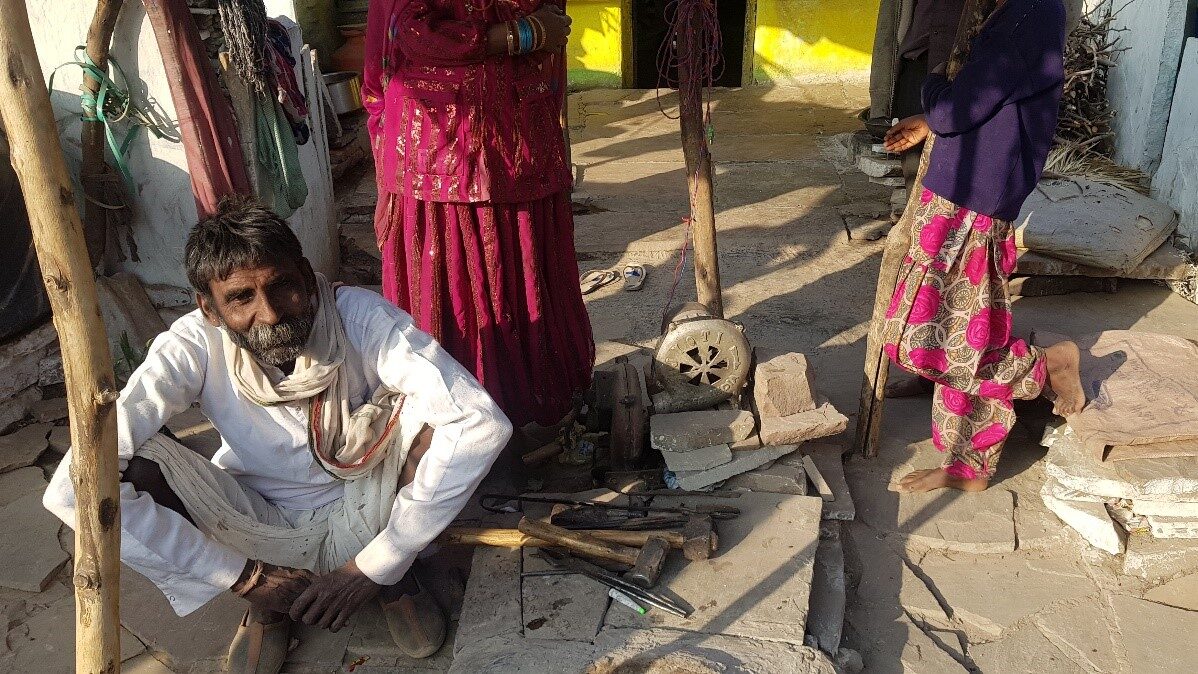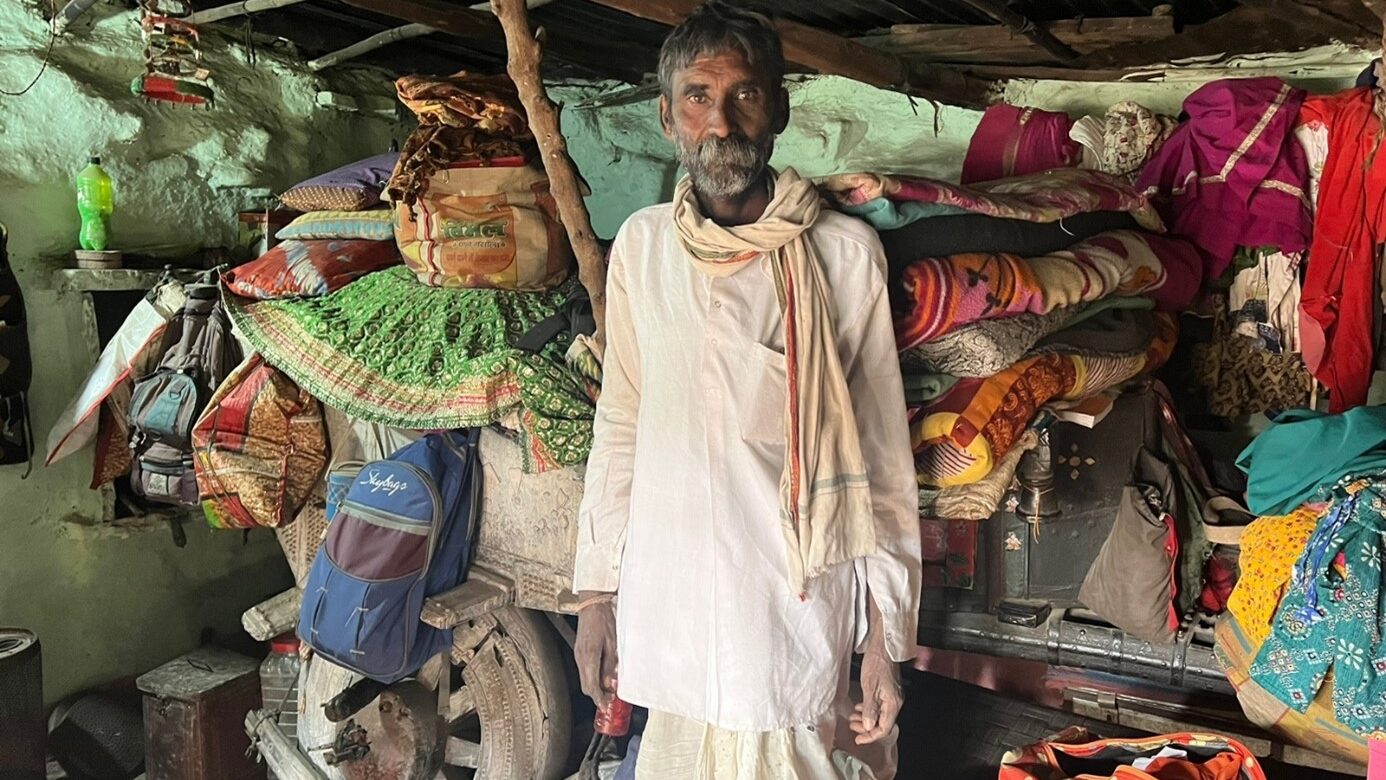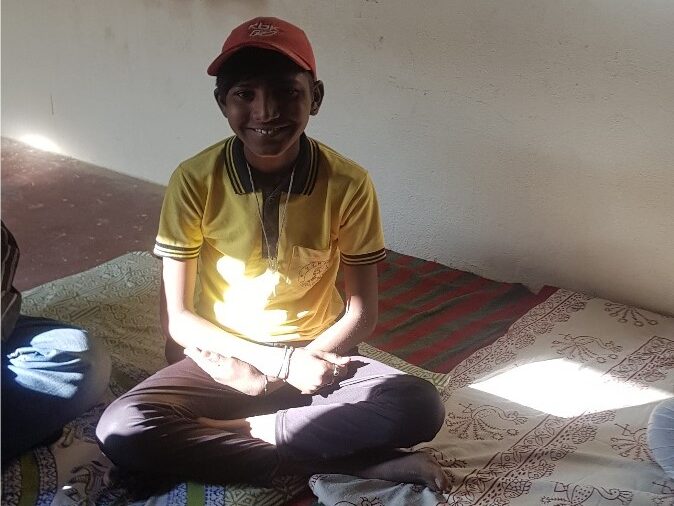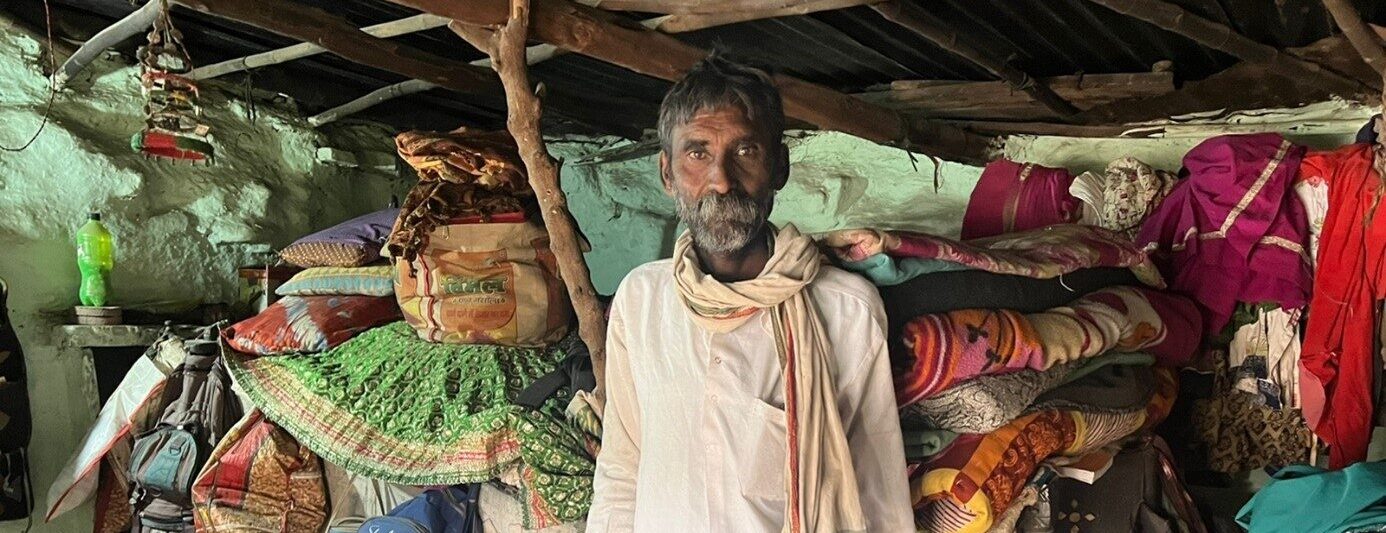Mr Ramswarup (aged 55) is from the Gadia Lohar/Maharana community, who have lived as nomads for many hundreds of years since losing a battle with the Mughals in the year 1400. At the time they vowed never to settle down until the Chittorgarh Fortress was returned to the king of Maharana. Gadia Lohar men are primarily metalworkers. Traditionally, Gadia Lohars made weapons for the Rajputs. Mr Ramswarup learned how to make shizzles and the craft of ironsmithing at a young age by watching his father (as this is how the profession is passed down). The family came to Budhpura 35 years ago to work in the stone business. There was a need for chisels to cut the stones, so it was an opportunity to make an income.
Mr Ramswarup now has a wife, four daughters and a son. Two daughters are married, one has passed away, and the youngest daughter attends school.

Mr Ramswarup became familiar with Manjari six years ago when someone from Manjari visited his house and talked about education. Following the conversations, Mr Ramswarup’s son, Kamlesh, joined the motivation centre and later Manjari helped him with admission to a government school. At that time the family living in an area that was later earmarked for mining, so the entire village was forced to relocate. The family came to Budhpura, where Manjari again helped them and convinced Mr Ramswarup to send Kamlesh to a new school. Now aged fourteen, Kamlesh is the first generation of his family (and of the Gadia Lohar community in Budhpura) to go to school. The family decided to stay in Budhpura for Kamlesh’s education, although Mr Ramswarup was initially doubtful about sending his son to school due to the costs involved.
Kamlesh really enjoys school, but he was aware that the quality of education was better in a private school. He demanded better education, eventually joining a private school in the area. Another reason for Mr Ramswarup to send his son to school is that opportunities to work in their traditional occupation (ironsmith) are shrinking (as the mechanised industry is taking over chisel production).
“The chisels that we make are being made by machines now too. So there will be hardly any opportunity for my son to do the kind of work that I and all my forefathers have done for many hundreds of years. There is no future for this livelihood. Why should I put the future of my child in danger?”
Mr Ramswarup also mentioned that if you are illiterate, as he is, you are dependent on others. Basic literacy is becoming more and more important to survival in today’s world. You need skills and education. His child would most likely have joined the workforce (chisel-making or stone-cutting) by now if Manjari hadn’t come to talk to him about education.
The Gadia Lohar families are not really part of the Budhpura community as they are from this particular nomad group – they do not vote (as they are considered nomads) and could be displaced at any time. Mr Ramswarup’s entire hope for his family now rests on his son, to change their the way they live. His focus is on educating his children to get educated and the family are looking for a more permanent home.
In his house Mr Ramswarup still keeps the traditional cart that he and his family used as nomads.

Kamlesh
Kamlesh is fourteen years old. He likes school very much and likes to play as well. He is in the 6th class of a private school. When he grows up he wants to support his family. Kamlesh enjoys languages like Hindi and English, and has started reading books from Manjari’s library. He wants to become an engineer – because it will earn him good money – even though he has never met an engineer.
Kamlesh has two friends at school who are from different communities, and he attends the tuition centre at Manjari’s office every day. He likes Saturdays, because that’s when they dance. Kamlesh loves dancing.

“I like school because it gives me wisdom, an understanding of what is good and bad and how to become a good human being.”

